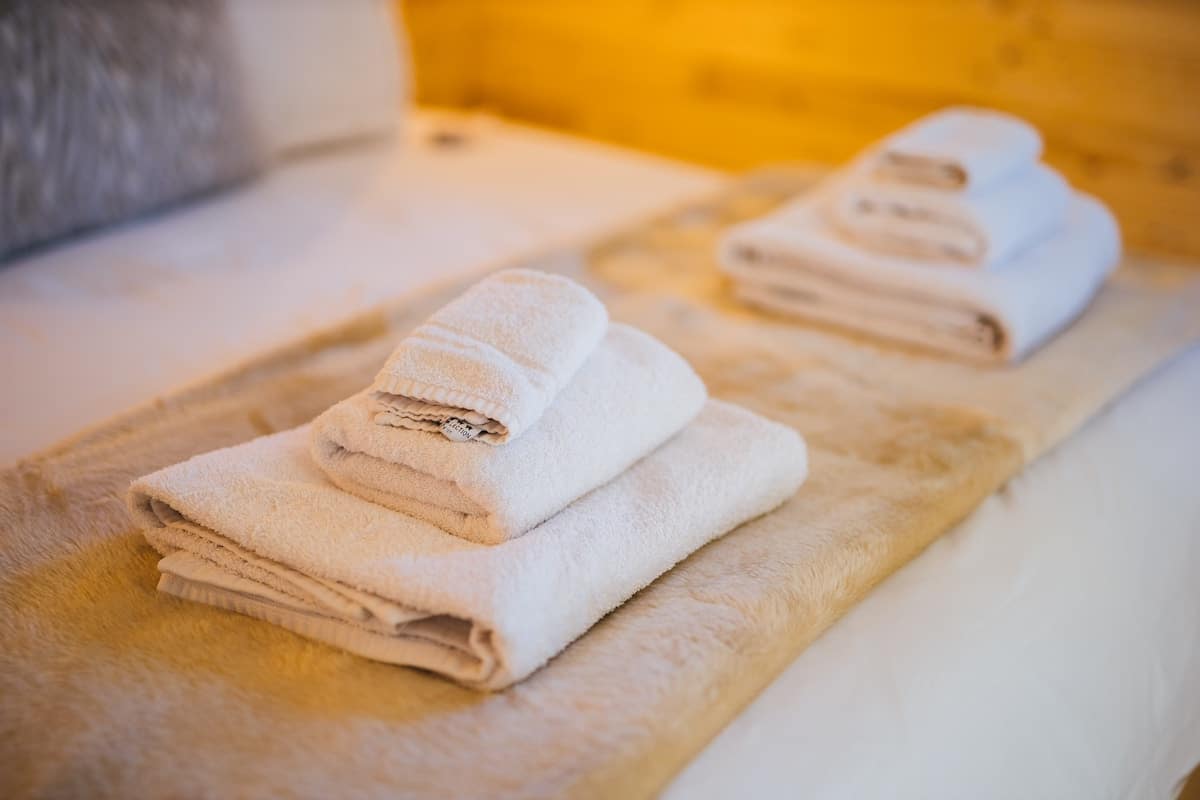Dirty towels are carriers of microbes like bacteria and viruses. Every time someone uses a hand towel, they transfer the bacteria or germs from their hands to the towel’s surface. From there they can easily infect others and spread sickness in your household or office. Think about it, bath towels, face towels, and hand towels, hang in warm, moist bathrooms and are shared by all members of the family. These towels are exposed to millions of disease-causing bacteria which in turn can cause skin infections.
If these towels are not washed frequently and changed every day, you and your family may be exposed to millions of bacterial, fungal, and viral skin infections. Most of the time, it is difficult to find the source of such infections after they occur, but there is a good chance that it may be the towels in your home.
How Do You Know if Your Towels Are Making You Sick?
Towel fibres house bacteria that may cause cold or flu-like symptoms. The bacteria that cause such infections may be contracted from other sources too. But your towels may be the cause.
Some of the noteworthy symptoms of such infections are listed below –
- Stomach cramps
- Sore Throat
- Runny Nose
- Diarrhoea
- Fever
- Nausea
- Vomiting
Hand towels and face towels are reused throughout the day, sometimes by multiple people. They are kept in the bathroom, which is a warm and humid environment – that prevents them from getting dry. Therefore, it is no wonder that towels are home to a staggering 164,000 bacteria in each square inch of their surface! Remember this the next time you share a hand or face towel with someone else. The towel may transfer an army of germs to your skin.
How to Ensure That Your Towels Are as Hygienic as Possible?
Experts say that the key to hygienic towels does not lie in washing them often. Rather, it is about drying the towel between uses. For bacteria-free clean towels, you should wash your towels at least once in three days. When using a particular towel, do not hang it on a traditional towel bar or hook between uses. Instead, use a heated towel rack where they may stay dry.
Heated towel racks are known to reduce the microbial load on a towel by 75%. Reducing the danger of bacterial or viral infection for you and your family. Besides that, washing your towels properly can make all the difference. Here is a look at the steps for properly washing your towels –
- Two Loads – Run your towels in the washing machine twice. That way, they will be cleaned with twice the amount of detergent to kill the bacteria on your towels. According to how much heat your towels can tolerate, use hot water in both loads. After the second load, put your towels in the dryer and ensure that they are completely dry at the end of the cycle. Then fold and store the clean towels in a well-ventilated cupboard until you are ready to use them.
- White Vinegar – White vinegar is acidic and helps rid your towels of dirt, odour, and unwanted particles that detergent can’t. Remember to use white vinegar with a small load of towels, then wash them a second time using detergent. You should use hot water in both loads and dry your towels in the dryer as soon as they are washed.
- Baking Soda – Baking soda can help strengthen the impact of white vinegar on your towels. Place four or five towels in your washer with a half cup of baking soda and run the load. Then, in the next load add a cup of white vinegar. The baking soda loosens any deep-seated bacteria in the fabric and allows the white vinegar to completely disinfect your towels. Dry your towels in the dryer after the wash is complete.
- Avoid Fabric Softener – Fabric softeners can remain in the towel fibres even after the towel has been thoroughly washed and dried. It can promote the growth of dirt and bacteria in the fabric.
How Often Should You Wash Your Towels?
Ideally, every towel in your home should have a designated purpose and the washing schedule depends on the frequency of use. So, it may be okay to wash a bath towel twice a week, but hand towels should be washed more frequently.
So, according to your usage pattern, you can design a towel-laundry schedule that ensures that all your towels get washed after three or four uses at least. After that, you must dry the towels completely before you use them again. Also, remember to dry your towels between uses to ensure hygienic hand towels for your entire family.
The best way to prevent bacteria build-up is to invest in good quality towels that are easy to wash and quick to dry. Replace your towels as quickly as you can, and choose towels that can withstand high temperatures in the washer. You can also check out self-cleansing towels that prevent bacteria build-up and antimicrobial hand towels for better results.


